






ALLAS SEA POOL is a restaurant, sauna pool oasis at Kata anokka.








ALLAS SEA POOL is a restaurant, sauna pool oasis at Kata anokka.
Allas Restaurants has three floors with different consepts: Café Terrace
SEA R LL restaurant cocktail bar Rooftop Sky Bar
On our deck you can find swi in pools, saunas and sun bathin areas.



Co bine the experience of swi in at the harbor of Helsinki and en oyin fresh flavors fro our kitchen and bar Scan the QR-code and check our menu o enin hours


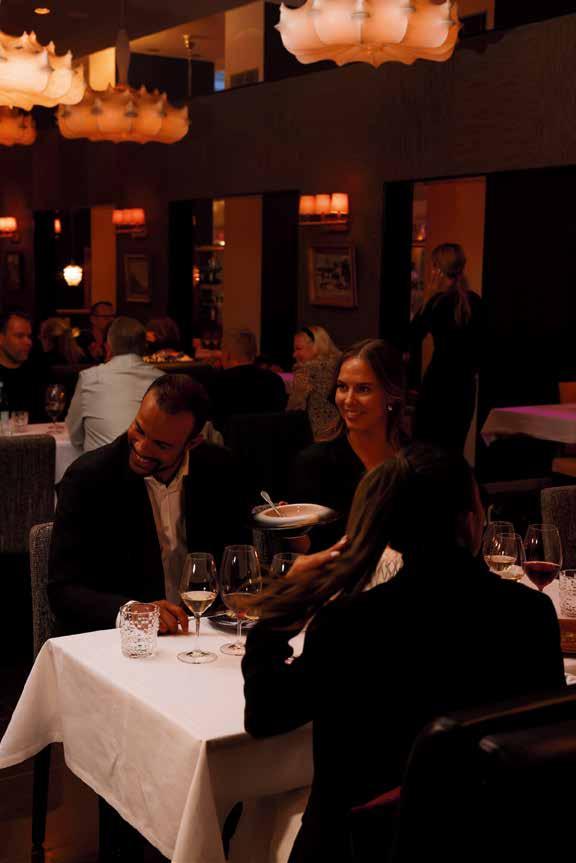

Restaurant Teatteri is an unique restaurant complex. It includes Teatteri Grilli restaurant, Teatteribaari lounge bar, Kellobaari cocktail bar, Klubi nightclub and Deli salad bar.

Teatteri Grill restaurant at the heart of the complex is a popular meeting place with locals and tourists alike. We want to provide a comfortable setting and delicious food and drinks for such meetings.
Pohjoisesplanadi 2, 00130 Helsinki
+358 9 6128 5005

Pohjoisesplanadi 2, 00130 Helsinki
+358 9 6128 5005
Nightclub table bookings tables@teatteri.fi










Welcome to the Metropolitan area 8
Midsummer: A night of magic 10
Murder in Iceland and Finland 12
Tracking down the Ice Age 16
Map of metropolitan area 18
Hotels providing Metropolitan Times 20
Marvels of science, art and astronomy 23
The Forbidden Kalevala 28
Paris, Finland 1924–2024 30
Safe havens – Column by Elina Hirvonen 32
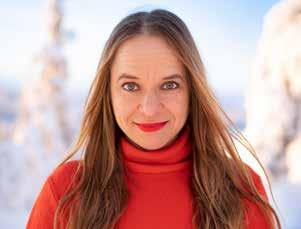

Metropolitan Times Magazine for Visitors
Issue 1/2024
Summer www.metropolitantimes.fi
ISSN 2489-2688 (print)
ISSN 2669-8277 (online)
Graphic design & layout
Petteri Mero
Mainostoimisto Knok Oy
Printed by Newprint Oy
Editor in chief
Roope Lipasti
Sales manager
Raimo Kurki
raimo.kurki@aikalehdet.fi
Tel. +358 45 656 7216
Sales Pirkko Puurunen
pirkko.puurunen@aikalehdet.fi
Tel. +358 40 507 1002
Metropolitan


Published by Mobile-Kustannus Oy Brahenkatu 14 D 94 FI-20100 Turku, Finland
Member of Finnish Magazine Media Association (Aikakausmedia)
Publisher Teemu Jaakonkoski

Cover photos
Katajanokka district, Helsinki. Photo: Jussi Hellsten / City of Helsinki Sofiankatu, Helsinki.
Photo: Jussi Hellsten / Tori Quarter Picnic with friends.
Photo: Aleksi Poutanen / Helsinki Partners Hakaniemi, Helsinki.
Photo: Eetu Ahanen / Helsinki Partners Elina Hirvonen.
Photo: Otto Virtanen / WSOY



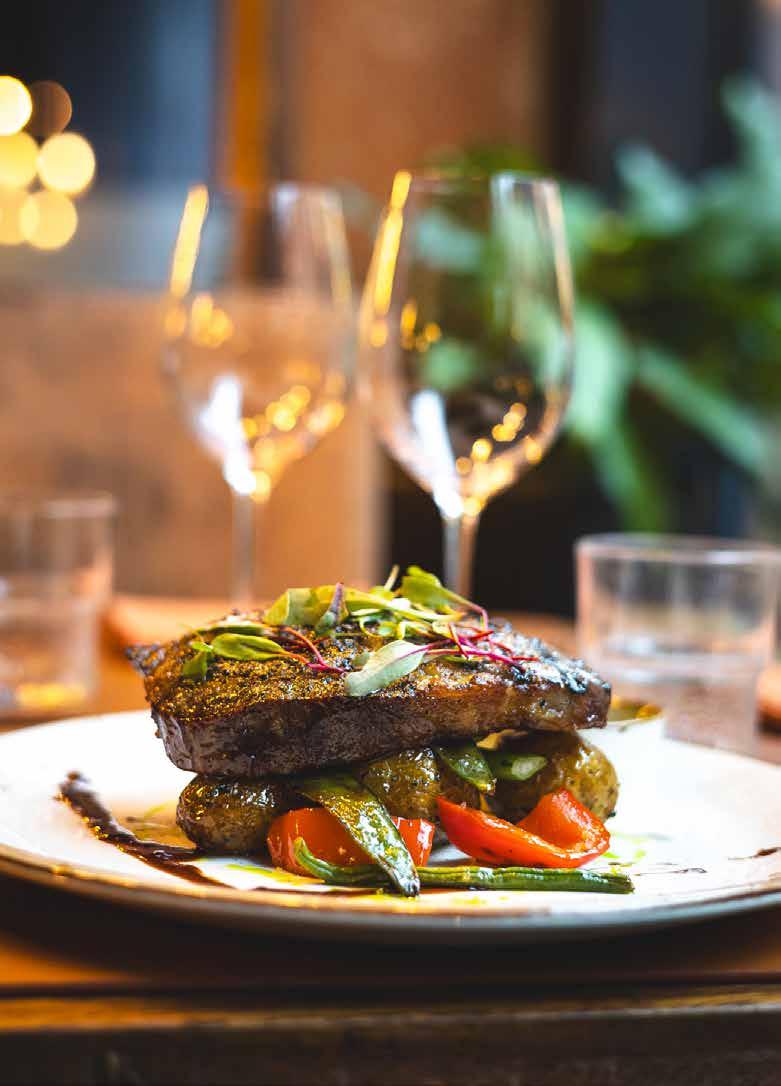
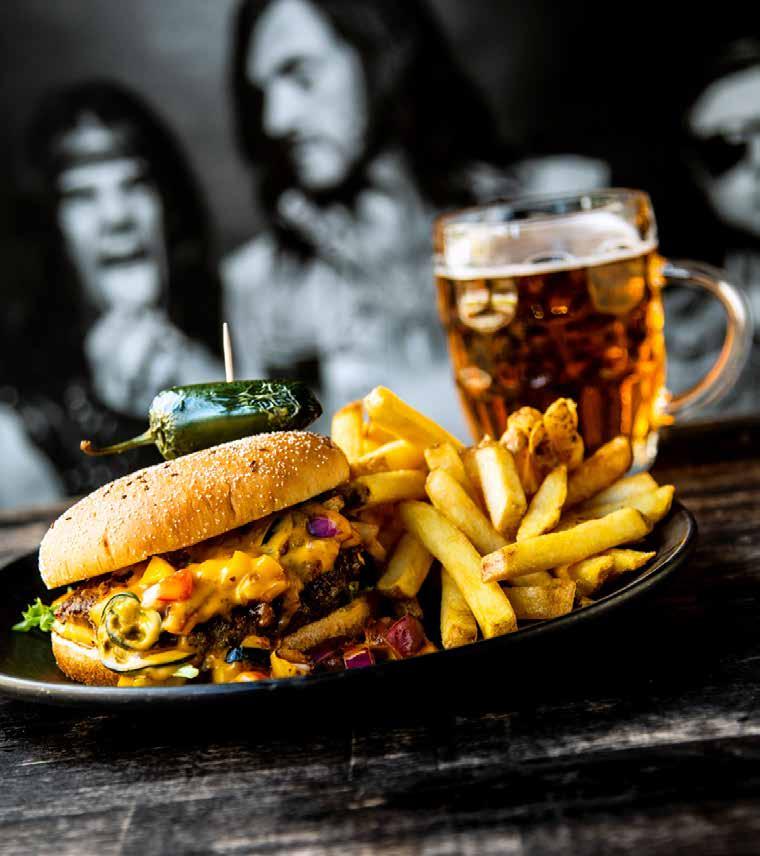




Located just a metro ride away, Espoo is a vital city that offers everyone interesting things to see and experience. We have a lot to offer for those craving culture: visit a fascinating museum at the Exhibition Centre WeeGee or participate in one of our city’s many events.
Large natural areas are characteristic of Espoo: seashores, the archipelago, the wilderness in nature reserves and the waterways of the lake highlands. The cultural landscapes, built environments and natural areas of Espoo are like Finland in miniature.
The special feature of our city is an urban structure that relies on five different centres, all of them along the railway or metro line.
Espoo is growing fast and the growth is strongly focused on the areas along the railway and metro lines. We have made an ambitious commitment to achieve climate neutrality by 2030 together with 25 partners, including Aalto University. As one of the leading cities in localising the UN 2030 Agenda’s Sustainable Development Goals and receiving the EU Mission Label for Climate-neutral and Smart Cities in 2024, Espoo has been recognised as a forerunner in innovation that benefits both people and the planet. We want to ensure that our city continues to grow in a sustainable manner..
Welcome to Espoo!
Jukka Mäkelä mAyor of ESpoo

Congratulations on choosing Helsinki as your traveling destination!
Helsinki is a city for good life: Smart, functional and compact, it welcomes everyone, whether for a short or a longer visit. First, during your visit here, do not be afraid to ask! Helsinki’s locals are extremely open and hospitable, and most speak English fluently, so don’t be afraid to ask us for advice. We’d love to tell you about Helsinki’s greatest secrets! This is also a safe city where young people as well as old people can easily move around using our fine public transport network.
In Helsinki, you can feel the presence of the sea everywhere. This is because the city has over a hundred kilometers of shoreline and an archipelago consisting of 300 islands. It should be no surprise that Helsinki has some great public saunas – both traditional neighborhood saunas and brand-new design saunas. There’s no better way to get to the heart of the Finnish identity. Discover the countless boutiques of the Design District! Finland’s world-renowned modern design heritage can be seen everywhere in Helsinki.
PS. Do not forget to visit myhelsinki.fi, which is an excellent guide regarding what to do while your visit in our nations capital!
Juhana Vartiainen mAyor of HElSinki
All roads lead to Vantaa. It is situated at the hub of national major roads, main railroad, local and long-distance transit, as well as international air traffic: well-functioning transport connections bring tourists to Vantaa from all over Finland and from everywhere else in the world.
Passengers again chose our airport to be the best in Europe of its size, and the service level will yet improve when Finland’s biggest hotel – Clarion Hotel Helsinki Airport – is opened right next to the terminal on June 1, 2024.
Vantaa is aiming at carbon neutrality, for instance, with the help of light rail that will further bolster green mobility options. The light rail, which is scheduled to start operating in 2029, will take you to our seven lively urban centers.
Vantaa, the fourth biggest and most international city in Finland, celebrates its 50th anniversary as a city this year. Therefore, we invite you to celebrate the anniversary with us on Vantaa Day, at Tikkurila Festival, BRQ Vantaa Festival, Helsinga Medieval Day, Local Heritage Days, as well as myriad other events arranged by our residents throughout the year.
In honor of the jubilee year, you can jump on a city bike for free and cycle to, for example Kuusijärvi Recreation Centre Vantaa and attend the Nuku yö ulkona (“Sleep outside”) event at Metsähotelli, enjoy sauna and swimming throughout the year, and hike to Sipoo National Park, which is situated right next to the lake.
Pekka Timonen, mAyor of vAntAA
pHoto: olli urpElA pHoto: SAkAri röySkö Welcome to Vantaa!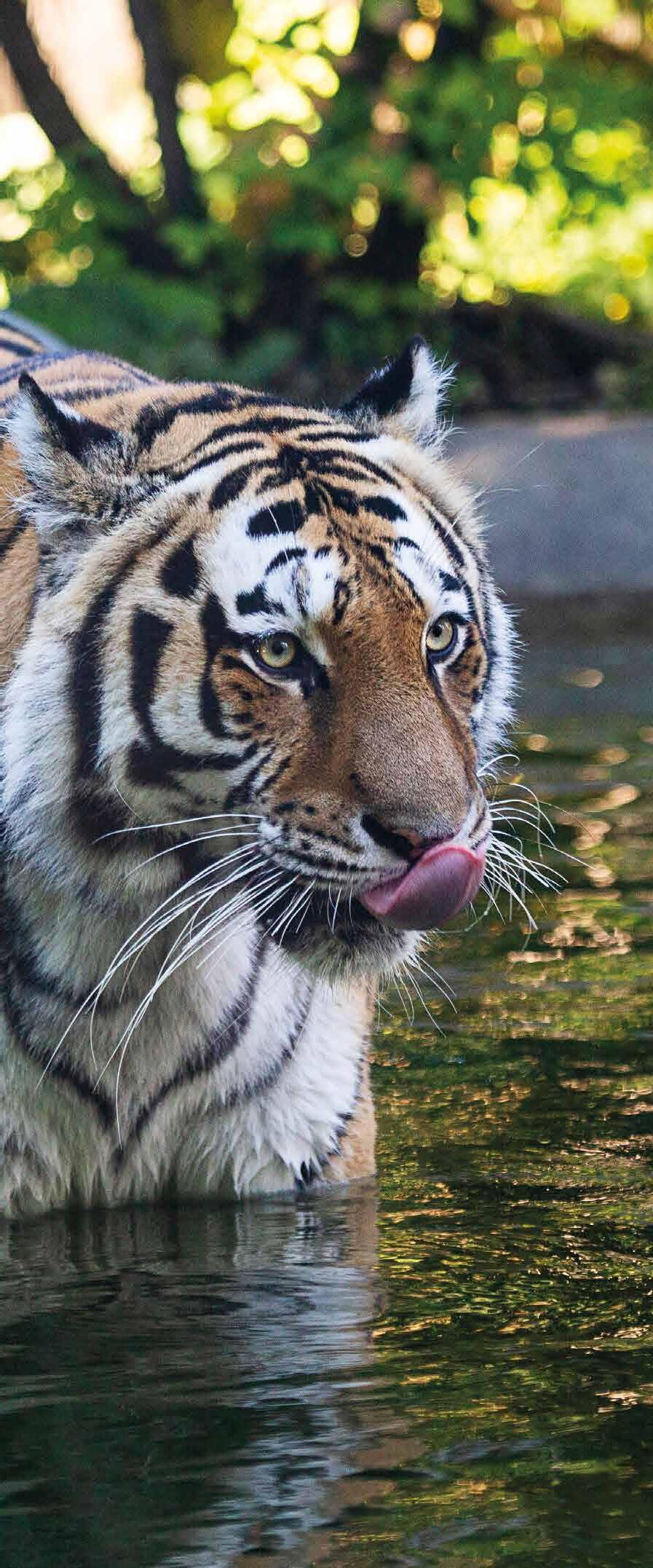
Korkeasaari Zoo is uniquely located on an island in the Baltic Sea. It’s just outside the city, you can literally see the Helsinki Cathedral from the zoo. It takes only 20 minutes to get here by local bus (no 16) from the Railway Station or a ferry from the Market Square during summer. Meet animals from the Himalayas, Siberia, Mongolia, Finland and the Asian rainforest – more than 150 species in total – while enjoying the silence and peace of the Finnish nature surrounding you.

It is not a coincidence that the snow leopard’s only bare spot is the tip of its nose or that the snowy owl is white and fluffy. Animals have their ways to adapt to cold climates. At Korkeasaari Zoo we want our large animals to enjoy outdoor life throughout the year. Therefore, instead of seeing a giraffe or a hippo, you will see a wolverine, a forest reindeer, an Amur tiger and a Bactrian camel – all species adapted to extreme winter. On a windy day, follow suit from the animals and dress warmly. If it gets too chilly, take refuge in the warm tropical houses.

Korkeasaari Zoo is open all year round daily from 10 am. There are restaurants and kiosks on the island, or you can bring your own food and have a picnic. You’ll find a free map at the entrance to guide you through your visit. www.korkeasaari.fi

Our mission is to conserve biodiversity. We want our visitors to value the importance of biodiversity and aim to motivate behavior change for conservation. In cooperation with other modern zoos, we breed endangered species to maintain a healthy and viable zoo population. Zoo populations have already saved various species from extinction. In order to support our mission in protecting wild animals and their natural habitats, we donate annually to various field conservation projects. Bring your coins and donate to the project of your choice. By visiting Korkeasaari Zoo, you support our work as defenders of biodiversity and endangered species.
From 1st June until 20th October 2024 Korkeasaari has visitors from the Mesozoic Era. You will meet 20 real-sized mechanical dinosaurs that move and make sounds. While you admire their size and appearance, you will also learn why species become extinct.
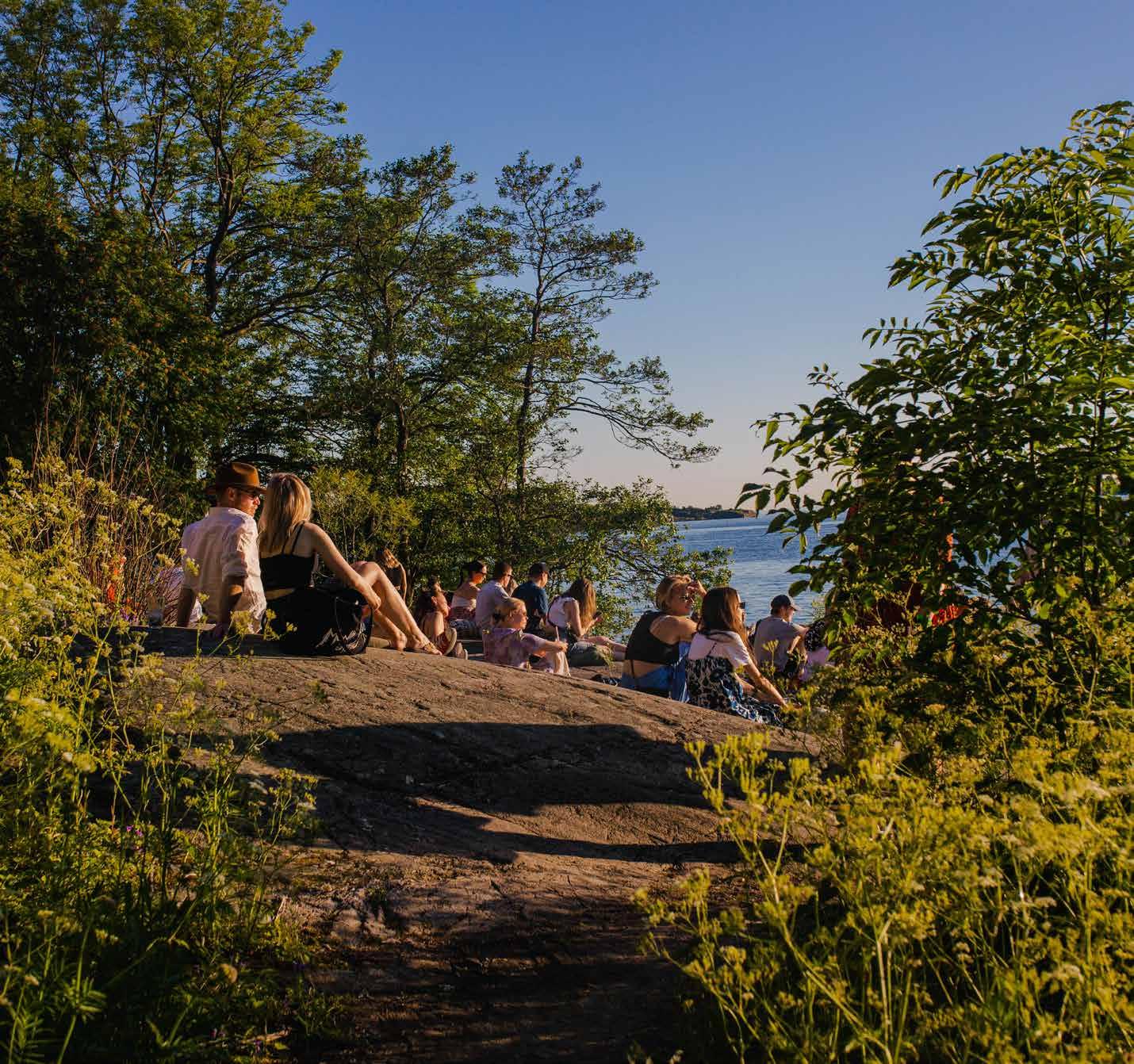
There is one striking commonality in the old Finnish Midsummer magic rituals: everything must be done naked.
Midsummer, which falls on June 21–23 this year, is one of the most, if not the most, beloved celebrations of the year for Finns. On Midsummer, we celebrate the longest day of the year, when the sun doesn’t set at all. It’s called the nightless night, and it has its own very special magic.
On Midsummer, every Finn is willing to do whatever it takes to escape to their summer cottage. The cities empty out, and it was even more extreme in the old days – nowadays the shops at least stay open. But even today, the cities are remarkably quiet on Midsummer Day,
and even in Helsinki, you can walk down the middle of the street without worrying about being hit by a car.
If you hate people and you want to be alone, Finland is exactly the place to be during Midsummer!
Since the sun never sets, Midsummer Night is associated with strange magic and magical rites. For example, Finns light bonfires on Midsummer. We’re talking proper, impressive bonfires along the shore in front of practically every summer cottage – though the authorities usually forbid it, citing the risk of forest fires. Often they are lit regardless.
Originally, the purpose of the Midsummer bonfire was to ward off evil spirits. Nowadays, people mostly gather around them to indulge in a different kind of spirits.
Midsummer dances are also traditional, gathering people together in some remote village to celebrate. A Midsummer sauna is self-evident. The Finnish flag plays a role, being hoisted on the flagpoles at 6 p.m. on Midsummer Eve. In Swedish-speaking areas in particular, a Midsummer pole is erected: crossbeams are attached to a tall, flagpole-like post and decorated with flowers and greenery. Unlike in the movie “Midsommar”, however, no one ends up sacrificed.
Midsummer, like many other festivals of the year, was originally a celebration related to ancient beliefs and light that has since been replaced by Christianity: Midsummer now celebrates the birthday of John the Baptist, hence its Finnish name, Juhannus.
So it’s no wonder that many kinds of spirits are said to be active on Midsummer Night, and that it’s also particularly auspicious for magic. The biggest objective of Midsummer magic by far is to improve one’s marital fortunes and hopefully see one’s future spouse in advance. (That’s wise, so you know to run away when the big moment draws near.)
For some strange reason, the magic also often requires that young maidens parade around in various places without clothes. Old-time wishful thinking, no doubt.
Nonetheless, the most well-known Midsummer magic is chaste: if you collect seven different kinds of flowers on Midsummer Night and place them under your pillow, you will see your future spouse in your dreams. An alternative outcome is hay fever.
If you’re especially eager to get out of your clothes, Midsummer Eve is a splendid opportunity. For example, if you look into a well,
pond or spring on Midsummer Night – while naked – you will see your future spouse.
It’s especially lucky for finding a spouse if on Midsummer Night you roll around naked in a dewy meadow. You might want to warn the neighbors in advance so they don’t call the police on you.
Every Finn knows the Midsummer magic that says that if you run naked from the sauna along the ditches of a rye field, you’ll find your groom at the ninth ditch. Don’t worry about the first eight. Of course, finding a rye field can be challenging these days.
Fortunately, other fields are also of use: if you circle a triangular field naked three times on Midsummer Night, you’ll come across your future life partner on the third lap. What a wonderful first meeting!
Another way to see your future spouse, and without so much physical effort, is by entering a rapid on Midsummer Eve and sitting on a rock in the water completely naked except for a straw belt. In Finland, the rapids are always full of shivering maidens during Midsummer, you see.
But why bother going the extra mile: if on Midsummer Night a girl sweeps the floor of her bedroom stark naked, with just a red string around her waist, the ghost of her fiancé will come to greet her. A bit creepy, admittedly.
MoDErn timES HAvE contributed to Midsummer magic as well. For the sake of equality, this magic is for the men: If on Midsummer, you spend three days at the cottage fall-down drunk, run pantless to the neighbor’s cottage looking to score, and on the way back stop to piss on the bonfire and fall in, then in the evening when you go to sleep, you can see, on the other side of the bed, your very-soon-to-be ex-wife. s
If
you collect seven different kinds of flowers on Midsummer Night and place them under your pillow, you will see your future spouse in your dreams.

Satu Rämö’s Hildur series has captured the hearts of Finns.
Written by roope Lipasti transLated by Christina saarinen photos by björgvin hiLmarssonI found Iceland appealing from the beginning. It’s incredibly beautiful there - and the weather is always terrible.
Acouple of years ago, an interesting new acquaintance came to the attention of Finnish detective-novel fans: an Icelandic police officer named Hildur, who solves crimes in the rugged landscapes of her homeland. The force behind Hildur is a Finn, however: Satu Rämö, who has lived with her husband on the island of fairy tales since 2008.
Readers have now followed Hildur’s story across three books, which have been an exceptional success. Of the three top bestselling Finnish books of 2023, three were by Satu Rämö! Hildur’s appeal has also been recognized abroad: the translation rights to the books have been sold into many languages, and of course a TV series is also in the works.
The author herself is a little embarrassed by the success because Hildur was her first work of fiction, though she has been writing her entire life:
“I’ve always thought that the coolest thing you can do in life is write. For me, writing is a way of organizing the chaos inside my head into the form of text. I had previously done several nonfiction books and worked as a journalist. But the big question was, can I write fiction? There was only one way to find out, by giving it a try.”
The first Hildur book will be published in Icelandic this fall:
“It’s exciting to find out what Icelanders think about it. Will they read it as some foreigner writing about their country, and does she even know anything about it? Or will they just read it like a crime novel?”
Rämö has an Icelandic husband, but it’s not the usual following-one’s-spouse-abroad story:
“I fell in love with Iceland first and only met my husband later. I think it was a good thing, too. This way, you don’t feel like you’ve been half-forced to follow after someone else. I found Iceland appealing from the beginning. It’s incredibly beautiful there – and the weather is always terrible. I met my husband the classic way, in a bar, on a trip in 2006, and when we met, I thought to myself that if we started dating seriously, it would be a good excuse to move there.”
And they’re still on that road, although last year the family spent a long stretch in Lapland, in Äkäslompolo:
“I love winter, and we go to Lapland every year for downhill and cross-country skiing because Iceland doesn’t have winter like in Finland. We also hoped that our kids would learn to write Finnish properly – they do speak it, but writing requires a little more work. So we decided to spend time in Finland so they can go to school here. And while we were at it, I got the idea that we could go to a place where you can ski. It was just a visit, though. Our home is in Iceland.”

Rämö is a typical writer in the sense that up until now, she has worked other jobs in order to be able to write. In terms of her education, however, she is an exception: Rämö has graduated from business school. She believes it has been useful in her work as a writer:
“When the story is in your head and you need to get it out onto paper, what they teach at business school will at least help you manage your own work. I mean, that you need to have a plan, and carry it out step by step, and so on – it’s a bit of an engineer’s approach to things, which suits me.”

Rämö’s specialization was in marketing:
“A lot of people in business school thought that marketing is a bit silly, but it really isn’t! It’s psychology, and you also learn how people behave. I still do work in digital marketing.”
I’ve always thought that the coolest thing you can do in life is write.
Iceland is a special country in many ways, but it also has something in common with Finland:
“The allure of Iceland is not just the nature but also that it’s so sparsely populated. You can be alone there: That is my mountain, and that is my waterfall. In Finland, you might find something similar on the remote islands of the outer archipelago, maybe somewhere out by Åland. When we visited Utö, Finland’s southernmost inhabited island, my kid said ‘Mom, it’s kind of like Iceland here.’ Maybe it’s the feeling that nature is big and I am small. It’s probably what tourists are looking for, too. And, of course, it’s similar to Iceland in Lapland,” Rämö says.
Fifteen years of Icelandic living has also taught her to see the good things in her native country:
“From the perspective of Iceland, Finland looks wonderful! Everything here always works. Well, when you actually live in Finland, you realize it’s not quite true. But from the outside, it really seems that way: recycling works, healthcare works, the trains are running, there are libraries in every village, you don’t have to own a car. The services in Iceland aren’t as good because there are so few people.”
There are also personality differences between Iceland and Finland:
“People live much more strongly in the moment there than in Finland. In Finland, people always make proper plans, and everyone knows how to fall into two straight lines and march smoothly forward, but in Iceland everyone does their own thing and they spontaneously try all kinds of things. There’s a lack of continuity and planning,” Rämö says.
Her theory is that it is due to nature: “In Finland, you aren’t bothered by volcanoes or winds that are so dangerous that it’s forbidden to go outside. So the moment you’re able to do anything in Iceland, you do it to the fullest. Personally, I find it a bit annoying, since I’m such a big planner. Fortunately, my work is mostly in Finland, so I don’t have to deal with Icelanders!”
A small amount of Icelandic exuberance, however, is a good thing:
“It’s something Finns could maybe learn from. The courage to do things you haven’t done before. For example, when I was still wondering whether I would be able to write fiction, my husband immediately said, try it and you’ll find out.”
Alongside the Hildur novels, Rämö has also found time to write a small knitting book, Siggan ja Satun islantilaiset villapaidat (Sigga ja Satu’s Icelandic sweaters). But Rämö vehemently denies being a good knitter:
“In Hildur, the second main character, a man, knits sweaters as a hobby, so I had to find out how it’s done. I tried to learn from YouTube videos at my office. Sigga happened to be my officemate and wondered what I was doing. I explained that I needed to learn how to knit for my book. She said it was the most absurd reason she had ever heard, but she promised to teach me.”
It turned out that Sigga was a professional in the field. And that’s not all: she said she had been dreaming of writing a book and had all kinds of sweater designs ready, but she didn’t have the skills to write it. So she asked Satu.
“I really didn’t have time for it, but on the other hand, she had taught me to knit, so I owed her. She had the instructions ready, but I had to dig up stories for the patterns and do the writing. It turned out to be a really nice book. There are slightly easier patterns that even I could make, and then there are more difficult ones. Knitting really is very relaxing. The repetition, repetition, repetition – while you’re doing it, all kinds of things come to mind,” Rämö says.
Things like ideas for new novels?
Yes, indeed:
“From the beginning, I had three stories in mind for Hildur, but as it often goes, the story started to grow. I didn’t have time to deal with this or that, and that other thing could also be interesting, and so on. So the fourth book, Rakel, will come out in the fall. Maybe it’s a little like what my grandmother used to say when she really didn’t feel up to going for a walk: if she went anyway, it would give her energy, and she would manage better next time. Doing the thing doesn’t take away your energy, it adds to it. In the same way, the stories feed each other.” s






Finland’s surface area is 75 percent forest. The forests are an endless treasure trove, where you can even see signs of the Ice Age.
Finns are often considered a somewhat cold people. Maybe one reason for that is that Finland was only finally freed from the clutches of a huge ice mass around 10,000 years ago. It takes a while to thaw out after that, especially since 20,000 years ago, there was a glacier up to 2.5 kilometers thick covering Finland.
Traces of that massive chunk of ice can still be seen in the Finnish landscape. One thing that Finnish forests are especially good for – besides getting lost – is looking for signs of the Ice Age. The forests, including Finland’s urban forests, are full of them. Let’s head to the forest, then!
There are plenty of options for where to go – after all, Finland is Europe’s most-forested country relative to surface area. Even better, Finland has an arrangement called “Everyman’s Rights,” which means that the forests are public, in the sense that everyone is free to visit them to enjoy nature
and the fresh air, as well as to forage for berries or mushrooms.
A 2.5-kilometer-thick piece of ice weighs quite a lot, and it pressed a dimple into the earth’s surface, as if it were a football with too little air. Around Turku, for example, the land sank 800 meters, although most of it quickly rebounded once the ice melted. Nonetheless, the land on the west coast of Finland is still rising half a meter every hundred years. The most visible signs of the Ice Age in Finland are the country’s thousands of lakes. They number around 168,000 in total, depending on how you count. Many of them were born when the ice pressed a hole in the ground, which then filled with meltwater.
Written by roope Lipasti transLated by Christina saarinenSuch large bodies of water as Lake Päijänne and Lake Saimaa originated in the Ice Age, for example. The shallow lakes near the coast are much younger.
Another massive relic of the Ice Age in the Finnish landscape are eskers, long ridges of sediment that formed under glaciers, the largest being Salpausselkä in southern Finland (or actually the Salpauselkäs – there are three of them). Smaller sandy eskers are scattered around Finland. When driving almost anywhere in the country, you’ll come across large sand pits where sand has been excavated for the construction industry.
When the ice melted at the end of the Ice Age, large, swift rivers flowed inside it. The rivers carried sediment and gravel as they flowed, forming eskers. The eskers are old riverbeds.
One sign of the Ice Age you’ll find everywhere is the large boulders called glacial erratics. Actually, all the stones dotting the forests are from the Ice Age, but the erratics are the most impressive. When the ice began to melt, its power was tremendous. Glaciers and water broke the bedrock and snatched up large stones the size of houses; they ended up in the strangest places.
Finland’s largest glacial erratic can be found in the sea off the coast near Turku. Its name is Kukkarokivi, and according to the story, it was thrown there by an angry giant. The stone is the size of a large detached house.
Many stone curiosities can be found in Finland, such as huge glacial erratics that are so acrobatically arranged that if you push them, they will sway, but always return to their place.
One beautiful example is the Kummakivi, located in Ruokolahti, which is a car-sized boulder that rests atop another rock, but with such a small point of contact that it almost seems to float.
Glacial erratics have also made good boundary markers through the ages because they are impossible to move. Another curiosity perhaps worth mentioning is the Kusikivi, or “Peeing Stone,” in Ostrobothnia, which according to the locals, is an important attraction at a certain road crossing. The stone is not very big, but reportedly, the king of Sweden once ducked behind it to do his business.
One of the most extraordinary signs of the Ice Age are so-called devil’s fields. They are areas where the ground is completely covered with large stones. In the old days, people didn’t know what they were, so
Finland’s Everyman’s Rights allow you to…
• walk, ski, cycle and swim in nature, as long as you’re not in someone’s yard or in cultivated fields, for example
• stay temporarily (for example, in a tent) in any area you are allowed to move through
• pick berries and mushrooms, and plants that are not protected by conservation law
• fish with line and rod and ice fish
• travel over ice and on waterways.
Everyman’s Rights do not allow you to…
• cause harm to others, disturb anyone’s home, or litter or damage the environment
• disturb animals or their nests
• collect moss, lichen, soil or wood
• drive a motor vehicle off-road without the landowner’s permission
• fish by any method other than line and rod
it was thought that some malicious being had made them. The fields were so rocky that only a devil could have plowed them.
In reality, the devil’s fields are old sea beds, and the rocks were carried by the waves. The stones remained where they were when the earth’s surface rose and the sea receded.
Also in the category of features formed by water are “giant’s kettles,” circular holes in the bedrock that can be meters deep and are sometimes filled with water. They can be small enough that not even a child could bathe in them, or so large that you could easily go for a swim.
They were created when the movement of the ice caused stones to rub against the bedrock and slowly grind a hole in it, almost as if the stones were drill bits. Giant’s kettles aren’t terribly rare, either; even in Helsinki, you can find a dozen.
The Finnish name for giant’s kettles, hiidenkirnu, contains the word hiisi, which once referred to a sacred site but later came to mean a malevolent being.
On tHE coASt, the most visible evidence of the Ice Age can be seen in the formations called roches moutonnées: the smooth, rounded mounds of exposed bedrock. They rock surfaces are so smooth that it almost seems as if someone has polished them. And in a way, that’s exactly what happened: ice and water polished the rocks.
As it melted, the ice slid across Finland from northwest to southeast, as can often be seen by the direction of the grooves on the polished surfaces of the rock. s

PLEASE LEAVE THIS MAGAZINE FOR THE NEXT GUEST – THANK YOU!
YOU ARE HERE!
Hotels providing Metropolitan Times are marked on the map with numbered dots. The list of hotels can be found on page 20.



Helsinki became the capital of Finland in 1812. Back then, it was merely a village, although it was founded as early as 1550. Nowadays Helsinki has got 675,000 inhabitants and is the largest city in Finland. More information: myhelsinki.fi.
The first mention of Espoo dates back to 1431, but it was not granted city rights until 1972. There are several centres in Espoo, of which Leppävaara is the largest. It is the second largest city in Finland with 314,000 inhabitants. More information: visitespoo.fi.
Vantaa is Finland’s fourth largest and the oldest city in the capital region: the first mention of it dates back to 1352. Helsinki Airport is located in Vantaa. Just like Espoo, Vantaa has several centres. Inhabitants: 247,000. More information: visitvantaa.fi.
The metropolitan area and the municipalities or cities of Hyvinkää, Järvenpää, Kerava, Kirkkonummi, Nurmijärvi, Sipoo, Tuusula, Mäntsälä, Pornainen and Vihti form the greater metropolitan area with a population of about 1.4 million inhabitants. Together with the cities of Porvoo, Lohja and Riihimäki, the population of the greater metropolitan area rises to about 1,600,000.
01 brEAk SokoS HotEl flAmingo
Tasetie 8, 01510 Vantaa
Tel. +358 20 123 4605 www.sokoshotels.fi
02 clArion HotEl HElSinki
Tyynenmerenkatu 2, 00220 Helsinki
Tel. +358 10 850 3820 www.nordicchoicehotels.com
03 croWnE plAzA HElSinki
Mannerheimintie 50, 00260 Helsinki
Tel. +358 30 030 8480 www.ihg.com
04 Hilton HElSinki Airport
Lentäjänkuja 1, 01530 Vantaa
Tel. +358 9 732 20 www.hiltonhotels.com
05 Hilton HElSinki kAlAStAJAtorppA
Kalastajatorpantie 1, 00330 Helsinki
Tel. +358 9 458 11 www.hiltonhotels.com
06 Hilton HElSinki StrAnD
John Stenbergin ranta 4, 00530 Helsinki
Tel. +358 9 393 51 www.hiltonhotels.com
07 HoliDAy inn HElSinki city cEntrE
Elielinaukio 5, 00100 Helsinki
Tel. +358 9 542 5500 0 www.ihg.com/holidayinn
08 HotEl AnnA
Annankatu 1, 00120 Helsinki
Tel. +358 9 616 621 www.hotelanna.fi
09 HotEl ArtHur
Vuorikatu 19, 00100 Helsinki
Tel. +358 9 173 441 www.hotelarthur.fi
10 HotEl HAAgA
cEntrAl pArk
Nuijamiestentie 10, 00320 Helsinki
Tel. +358 9 580 7877 www.hotelhaaga.fi
11 HotEl HElkA Pohjoinen Rautatiekatu 23, 00100 Helsinki
Tel. +358 9 613 580 www.hotelhelka.com
12 originAl SokoS HotEl AlbErt Albertinkatu 30, 00120 Helsinki
Tel. +358 20 123 4638 www.sokoshotels.fi
13 originAl SokoS HotEl prESiDEntti Eteläinen Rautatiekatu 4, 00100 Helsinki
Tel. +358 20 123 4608 www.sokoshotels.fi
14 originAl SokoS HotEl tApiolA gArDEn Tapionaukio 3, 02100 Espoo
Tel. + 358 20 123 4616 www.sokoshotels.fi
15 originAl SokoS HotEl triplA
Fredikanterassi 1 B, 00520, Helsinki
Tel. +358 20 123 4611 www.sokoshotels.fi
16 rADiSSon blu AlEkSAntEri HotEl Albertinkatu 34, 00180 Helsinki
Tel. +358 20 123 4643 www.radissonhotels.com
17 rADiSSon blu SEASiDE HotEl Ruoholahdenranta 3, 00180 Helsinki
Tel. +358 20 123 4707 www.radissonhotels.com
18 rADiSSon rED HElSinki Vuorikatu 24, 00100 Helsinki
Tel. +358 20 123 4720 www.radissonhotels.com
19 ScAnDic grAnD mArinA Katajanokanlaituri 7, 00160 Helsinki
Tel. +358 30 030 8404 www.scandichotels.fi
20 ScAnDic HElSinki Hub Annankatu 18, 00120 Helsinki
Tel. +358 30 087 0680 www.scandichotels.fi
21 ScAnDic kAiSAniEmi Kaisaniemenkatu 7, 00100 Helsinki
Tel. +358 30 030 8403 www.scandichotels.fi
22 ScAnDic SimonkEnttä Simonkatu 9, 00100 Helsinki
Tel. +358 30 030 8402 www.scandichotels.fi



in Lakeland Finland, only 1 hour by train from Helsinki.








Pohjoinen Rautatiekatu 13,

PUUTARHAT
KAISANIEMI & KUMPULA
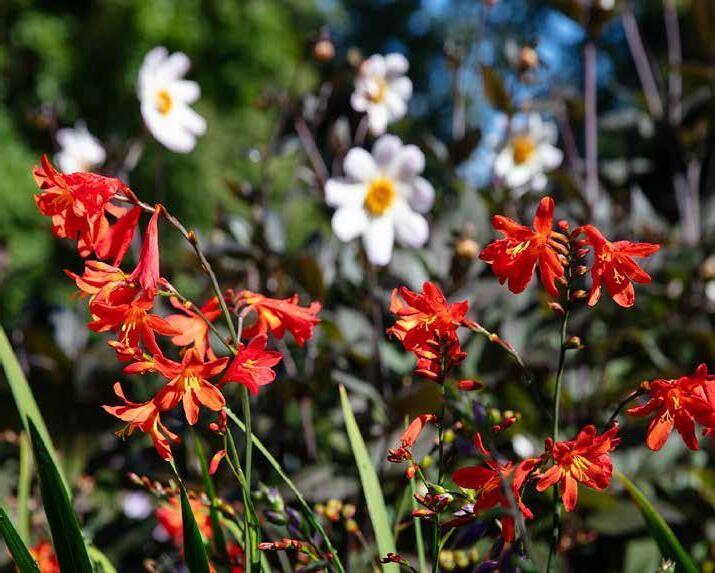



New sights around Senate Square, when Helsinki University Museum Flame opens its doors.
The flame of the longest standing university
Helsinki University is the oldest university in Finland. It was established during Swedish rule in 1640 in Turku, from where it moved to Helsinki in 1828. Currently, the internationally esteemed university is home to 11 faculties and more than 30,000 students.
Written by pauLa Kyyrö & miia-Leena tiiLi
The museum's compact exhibition center is a suitable size for a quick visit, but also offers a lot to see for a longer stay.

The main building of the university is located along the famous Senate Square. The building designed by the architect Carl Ludvig Engel was completed in 1832 and its extension, designed by Johan Sigfrid Sirén, in 1937.
The recently renovated building is an attractive place to visit, whose architecture and art can be admired independently during the building’s opening hours and on guided tours of the Helsinki University Museum Flame.
If you are interested in history and the story of the university, pop into the new Helsinki University Museum Flame in the university's main building at street level. The museum's compact exhibition center is a suitable size for a quick visit, but also offers a lot to see for a longer stay. It offers two exhibitions that will open in stages.
The core exhibition Passion for Knowledge tells about the people, disciplines and places where science is done at the University of Helsinki. How and why has the University of Helsinki influenced
the development of Finland and how has the change in society been reflected in the university’s history? At the exhibition, you can also take a look at the unexpected and touching destinies of people linked to the university.
In the Food for All exhibition opening on May 17, 2024, familiar ingredients take you to the history of Finnish food with a touch of humor. Our Nordic welfare state has not experienced a famine in more than 100 years, and sufficient and safe food is often taken for granted. Many people don't know how science has changed the way we eat and think about food. This exhibition about food research explains, for example, why Finns drink milk and eat potatoes so much. The exhibition is aimed especially at young adults, while its activities will certainly entertain visitors of all ages.
Did you know that you are “a child of the stars”? The chemical elements in the human body were created through nuclear reactions within stars over the course of billions of years.
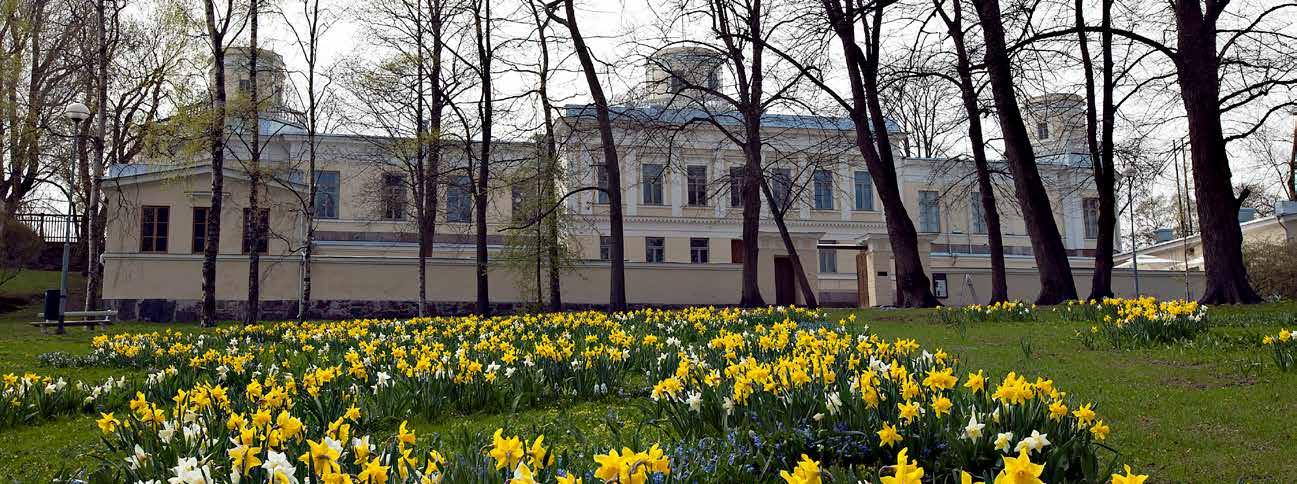
The museum's second venue, the historic Observatory completed in 1834, is located less than a kilometer from Helsinki University Museum Flame exhibition center. The permanent exhibition at the Observatory invites people of all ages to get excited about the marvels of space. How infinitely large is the universe? What do you look like in a thermal camera, and what does that have to do with astronomy? Here you can also touch a real meteorite that was formed five billion years ago!
Dive into the atmosphere of past ages in the historic Meridian Hall, where astronomers used to measure the locations of stars through the skylights while lying on an observation sofa. The room had to be completely dark and as cold as the air outside. Observation
activities were later relocated when the City of Helsinki grew around the Observatory.
At the Observatory’s small changing exhibition Help, climate change! you can learn about our planet’s changing climate.
Architecture lovers should also climb to Tähtitorninmäki from the Senate Square. The Observatory building, designed by architect C. L. Engel and astronomy professor F. W. A. Argelander, was the most modern astronomical research facility of its time, an example for other observatories – and the home of the astronomy professor and his family until 1969. It was built to enhance the beauty of the city, which is why it was placed in a prominent location on a hill at the end of Unioninkatu, a street that runs through the city center. s

MUSEUM FLAME
Exhibition centre, Fabianinkatu 33 / Yliopistonkatu 2, Helsinki
Opening hours
Tuesday–Wednesday, Friday–Saturday: 12–16
Thursday: 12–20
THE OBSERVATORY
Kopernikuksentie 1, Helsinki
Opening hours
Thursday: 12–20
Friday–Saturday: 12–16
Tickets
Adults:10 €
Reduced entry fee: 7 €
Under 18-year-olds: 0 € www.helsinki.fi/en/helsinkiuniversity-museum-flame

Lifestyle stores in Helsinki city center. We have many traditional quality brands for men and women. Come and visit our shop at the center of Helsinki
Myymme laadukkaita klassikkomerkkien vaatteita.
Tervetuloa tutustumaan myymälöihimme Helsingin keskustassa www.kapteenska.
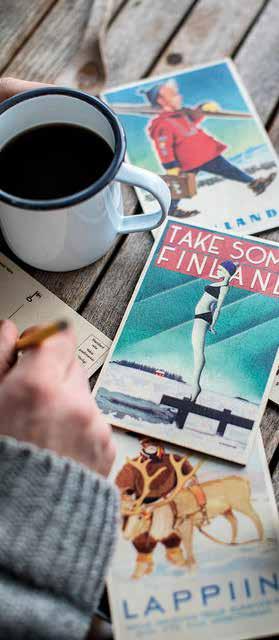


Helsinki - Turku - Tampere -Unioninkatu 23 050-3734567 -Kämp Galleria 050-3734571




Vanha kauppahalli • Torikor elit • Teurastamo Hietalahden ravintolahalli • Hakaniemen kauppahalli


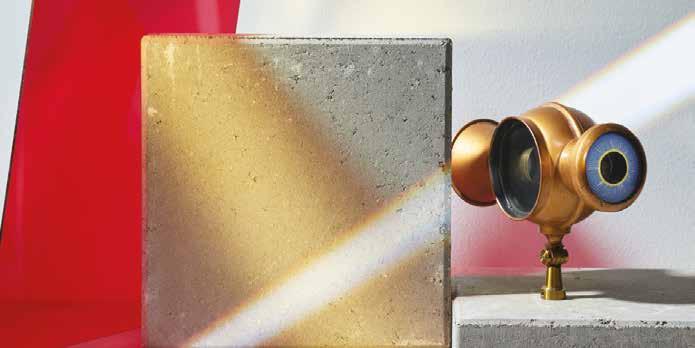


We elucidate the wonders of science, arts and starry sky.
EXHIBITION CENTRE THE OBSERVATORY
Fabianinkatu 33
Tue – Wed 12 – 16, Thu 12 – 20, Fri – Sat 12 – 16
Kopernikuksentie 1
Thu 12 – 20, Fri – Sat 12 – 16


Welcome to the private Toy Museum and Tea Room Café Samovarbar in the sea fortress Suomenlinna, Helsinki.

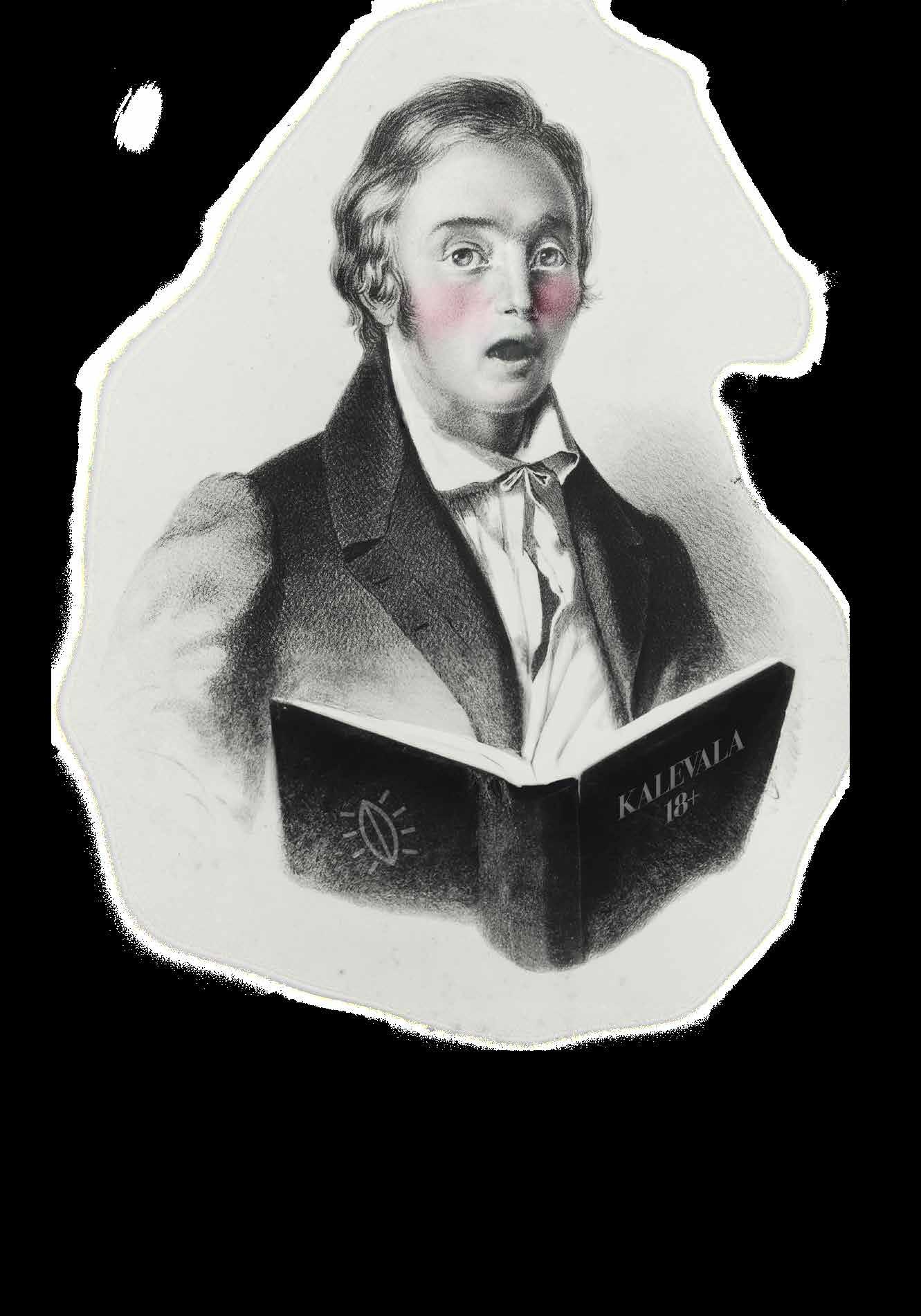
Finland’s national epic is a cleaned-up version of the material that was collected. The raunchiest folk poems would make OnlyFans blush.
Written by roope Lipasti transLated by Christina saarinenEveryone knows the Kalevala, Finland’s national epic. You know, the one that is generally mentioned in the same context as lofty works like the Odyssey and the Iliad or even Gilgamesh
But though the name is familiar, few have read the whole thing, and that’s true for Finns as well. So here’s a refresher: The Kalevala is a loosely-plotted story about the various disputes, revenge missions, wooing trips and other misadventures of the people of Kalevala and Pohjola. The wizard Väinämöinen is one main character, but there are plenty of others involved. The smith Ilmarinen,
The poems depict the joy of sexuality, longing for sex when you aren’t having it, passion, love magic and all the other things that we associate with sex even today.
for example, is a key character who forges the Sampo, a kind of wealth-producing miracle machine, which is later stolen by the wicked Pohjola. In addition, there is a seemingly endless number of young men who all fare more or less poorly.
There are women too: The Mistress of Pohjola is Väinämöinen’s evil opponent. The beautiful maiden Aino, on the other hand, is Väinämöinen’s desired bride, but the young girl herself isn’t so hot about the idea. The famous painting by Akseli Gallen-Kallela captures the #metoo spirit of the situation.
All in all, the Kalevala is an exciting and heroic story that could easily be made into a Marvel-type movie. But despite all the folklore ingredients, it is largely the product of Elias Lönnrot’s (1802–1884) pen. The poems themselves are largely authentic, though Lönnrot shaped them in places to make them sound better. But Lönnrot is the father of the Kalevala in the sense that he created the plotline for the story. He edited out what he felt was unnecessary, took pieces from here and there, and forged everything together to fit in one book.
Elias Lönnrot was a Fennophile through and through. When he was traveling around Finland and the surrounding areas from the 1820s to the 1840s, writing down old folklore, the goal was nothing more and nothing less than creating Finland – a nation that could one day become independent. And how could it not, when it had such a noble past, as the Kalevala’s beautiful and skillful poems indubitably proved.
But that visionary national awakening didn’t require quite all of the material Lönnrot collected. And certainly not the most obscene of the poems – of which there was no shortage!
Fortunately, Lönnrot was a scientist to the core. He was a doctor, researcher, journalist, linguist and botanist. So when he crisscrossed the deep forests of eastern Finland, Estonia and Karelia, for the most part on foot, he fastidiously made note of everything he found.
A scientist doesn’t blush, so presumably Lönnrot didn’t either – or at most, just a little – when he recorded this love spell from Ilomantsi in 1828:
Ahoy cock, arise cock, Here on this lass’s cunt, Here on this child’s hips, Here on this bird’s tail!
- -
Set the cocks plowing, The balls clanging, The sacks squealing, Free the cocks from their bonds, The furry shafts from their shackles.
Lönnrot wasn’t the only one collecting folk poetry. At one point, there was a whole slew of them in the forests of Karelia, and the competition was fierce. It was hard to beat Lönnrot, however, who collected tens of thousands of verses.
The juiciest of them weren’t used, but they were stored through the decades in the back room of the Finnish Literature Society, where researchers were able to access them.
About ten years ago, these sex poems were compiled into a little book called Tupa ryskyi, parret paukkui (The House is Rocking, the Joists are Popping).
The book contains birth poems for genitalia, odes, spells and satirical poems as well as various sexually suggestive songs.
The poems depict the joy of sexuality, longing for sex when you aren’t having it, passion, love magic and all the other things that we associate with sex even today. You would think that if more of these poems were taught in school, even the youth would be more interested in the old poetic traditions.
For example:
Oh, what a bother
Not having a wife, Stuck with a cock
Always standing upright.
(Collected by Lönnrot in Karelia in 1837)
In general, both the Kalevala and Lönnrot have left a somewhat dusty image for posterity. It’s a shame, because the former is interesting (though the language is difficult for the modern reader), and the latter was an extremely multifaceted and talented man.
For example, Lönnrot’s industriousness was not limited to nation-building and science (he wrote no fewer than four doctoral theses), but he was a man of enlightenment from top to toe.
As a doctor, Lönnrot was concerned about the scourge of alcohol, and he founded Finland’s first temperance society in 1834. Even then, he showed the same open-mindedness as when collecting erotic poems.
In the first volume of Lönnrot’s selected works, he describes the rules of his temperance club:
Each day, club members are allowed three drinks with meals, except if fish is being eaten – in that case, an additional drink is permitted. You can start the morning with a drink, and if desired, drinks are also appropriate at 11 a.m. and 6 p.m. Two toddies in the evening is the absolute maximum, but a third is okay if it’s taken with a piece of sugar. The consumption of wine and beer is not restricted in any way.
The rules of the club were so well thought-out that the majority of Finns still follow the key principles of Lönnrot’s temperance ideology today. s

Paris will host the Olympics this summer after a 100-year hiatus. A lot has changed in that time, both in Paris and in Finland.
Written by matti mäKeLä transLated by Christina saarinenIn 1924, PAriS is the pulsating center of a world recovering from the First World War; it’s everything that New York and London would be later. Ernest Hemingway arrived in the city back in 1921, and Gertrude Stein is running her cultural salon, supporting writers and artists such as Pablo Picasso, who has been living in the city for 20 years. Josephine Baker, perhaps the most iconic symbol of the 1920s “Années folles” in Paris, arrives the following year and immediately becomes a superstar. Later, this African-American dancer and singer will be named a Chevalier of the French Legion of Honor and awarded a medal for her work in the French Resistance during World War II.
The allure of Paris does not go unnoticed by Finns either. Mika Waltari, who rose to world fame with his novel The Egyptian, described the bohemian decadence of Paris in his early novel Suuri illusioni (The Grand Illusion): “God, how they live here! Only now have I discovered how depraved a person can be. Go stand at the bar of Le Select one night and you’ll see. I don’t care to say more. … It’s good to be here, anyway, to lose a little of those youthful dreams about the essential goodness of people and other garbage."
In t HE S umm E r of 1924, Finland is a young, poor and agriculture-dominated country that gained independence just seven years earlier, and only six years have passed since the end of the bloody civil war that divided the country. Finland’s three largest cities have a combined population of around 300,000 people (in Paris, there are nearly three million), and despite young Finnish artists’ enthusiasm for Paris, Finland is an inward-looking country where a visit by Josephine Baker led to protests as late as 1933.
Sports are of great interest to Finns, however, and are considered a way to increase national morale and make the country internationally known. Hopes are high leading up to the Paris Olympic Games because four years earlier, in Antwerp, Finland had won no less than 35 medals.
Those expectations are not disappointed, as Finnish athletes achieve a record of 37 medals in Paris, of which 14 are gold. On the medal table, Finland ranks second, after the United States. Finland’s achievement and the disproportionateness of the competition between the countries is emphasized by the fact that at the time, the United States already had more than 105 million inhabitants, while Finland had a little over 3 million.
Finland has changed enormously in a hundred years. The population has moved from the countryside to the cities, and the focus of business life has shifted from agriculture to technology, services and innovations. The combined population of Finland’s three largest urban areas is now roughly the same as that of Paris, a little over two million. (Of course, Greater Paris has more than twice as many inhabitants as the whole of Finland.) The new heroes are the founders and developers of companies like Supercell and Wolt, not long-distance runners. Even our sports heroes are generally extroverted stars of team sports, not silent loners like Paavo Nurmi.
However, not everything has changed. Somewhat surprisingly, Finland’s modest hopes for medals in Paris are in the same sports as a hundred years ago: athletics, martial arts, shooting and sailing. And despite the country’s internationalization and modernization (Josephine Baker would hardly cause protests in Finland these days), even in this year’s presidential election, opinion polls showed that a third of voters considered the homosexuality of one of the leading candidates as a reason not to vote for him.
Somewhat surprisingly, Finland’s modest hopes for medals in Paris are in the same sports as a hundred years ago: athletics, martial arts, shooting and sailing.
The biggest star of the games is Paavo Nurmi, who wins five gold medals, including both the 1,500-meter and 5,000-meter gold medals in the span of an hour. The cross-country race would also go down in history, with an overwhelming victory in almost 40-degree heat. Of the 40 participants, only 15 made it to the finish line, all of them more or less barely conscious, except for the superhumanly strong Nurmi. Finnish journalist and sports writer Martti Jukola described the dramatic final stages of the race: “Only when we see men collapsing on the field and others running back and forth, or from one side of the track to the other as if mad, do we suspect that our boys have fallen victim to the scorching sun. Some can no longer stand the excitement and cover their eyes when a Spaniard rounds a course marker like a rooster with its head cut off.”
At tHE 2024 Olympic GAmES, Finland will no longer be in the running to win the medal table, and no Finnish athlete has a chance of becoming one of the brightest stars of the games. In the summer games of the new millennium, Finland has so far achieved a total of 12 medals, and only one gold. At the current rate, the medal haul of Paris 1924 will only be matched in 2064, and in terms of gold medals, in 2284.

An D WHAt A bout PA ri S ? Paris remains a favorite filming location for TV series and movies and is considered by many to be the most beautiful and romantic city in the world. According to another point of view, the city has become the world’s largest open-air museum, where the cafes are no longer populated by Hemingway, Picasso, Sartre, Camus or countless other lesser-known artists and writers, but by tourists looking for their ancient haunts. Paris seems to lack the dynamism that continues to characterize New York and London – its two main rivals over the last century. Paris enjoys admiration inspired by its past glory, while London and New York still look to the future. London and New York are world cities; Paris is just a really big French city.
On the other hand, this assessment may be overly harsh. Paris is still one of the world’s most important cities for culture, food and fashion, and hosting its third Olympic Games (only London has been able to do so previously) says a lot about the city’s international weight. Perhaps this is the prelude to a new era for a city that was founded in Roman times. Punk and rap may not have been born on the streets of Paris, but the next big thing may already be on the horizon, which will – to quote Asterix – make Paris the “greatest city in the world.” A metropolis that moves young poets like it did Mika Waltari a hundred years ago: "How could I imagine all that. The eyes of the semaphores and the hundreds of glowing lights of switch lanterns on the great railway yard, a sea of fire in a strange city, a big city, the splendor of advertisements on the walls of grand hotels." s
The Paris Olympics will take place July 26 to August 11, 2024.

“Would you like to see the rooftop terrace?”
“I would love to.”
The year was 2012, and I had been invited as a guest to a literary festival in Algiers, the capital of Algeria. I arrived at my hotel in the evening alone, and the receptionist offered to show me around. I followed him up the narrow stairs to the rooftop terrace, which offered a broad view of the sunset-gilded city. There on the terrace, the receptionist suddenly put his arms around me and tried to kiss me.
I froze. I was pregnant, my belly already clearly visible under my dress. The first thing I thought of was the baby: what would happen if we got into a physical fight? I forced myself to stay calm. I broke away from his grip and told him I was tired from the trip and wanted to go to my room to rest.
In the room, I started shaking. The lock on the door was so flimsy that I suspected it could be opened with a hairpin. With a chest of drawers and chairs, I built a barricade in front of the door and placed two water glasses from the bathroom on top, which would fall with a clatter if someone tried to push the door open.
The unpleasant situation on the rooftop terrace has remained a strong memory for two reasons: because I was pregnant, and because it took place in a hotel, and I’ve loved hotels for as long as I can remember.
More accurately, I love the idea of a hotel. For me, a hotel is first and foremost a place where it is possible, in a neatly made bed, in a space encompassed by clean-smelling pillows, to escape one’s own life for a while.
I’ve spent the night in many different places during my travels, from a tent on the roof of a car to the lobby of a police station. These overnight spots have always been interesting, but when it comes to hotels, it’s not just about the lodging, but something bigger: a temporary escape from your own world.
I’ve checked into hotels exhausted, in love, or heartbroken, when I’ve been looking for a place to recover, and when I’ve longed for a space for my own thoughts, away from everyday life. At best, even a single night in a hotel can open up a space in one’s day-to-day life from which it is possible to see beyond the usual, where there is room for what is most important: imagination, silence, play and dreaming.
I have never understood people who complain that hotels are impersonal. For me, that’s the whole idea. When you check into a
hotel, especially when alone, you have the chance to momentarily escape your own personality as well.
OnE of my most intense memories related to hotels is the night I spent in a hotel in Oulu at the end of August 2021. The Taliban had taken over Kabul a couple of weeks earlier, and I had spent the previous days trying to get my Afghan friend and his family to safety.
When my friend’s family was finally safe, I went on a work trip and spent the night alone in a hotel. I went swimming, took a sauna, did yoga and read the work of a female Afghan writer. I hardly spoke to anyone for a day. That night alone in a hotel helped me make the return from the days filled with fear to a life that could once again consist of more mundane things than a friend in mortal danger.
I Am vEry aware that the opportunity to spend nights in hotels is a rare privilege. That’s why, in the end, the most important thing in a hotel is not what it offers me, but what it offers its environment and employees. A little while ago, I visited an expensive hotel where an important detail caught my eye: the employees wore ill-fitting uniforms. They looked uncomfortable in their clothing, and I had to wonder what kinds of conditions they were otherwise working under. Were they valued? Were the working climate, pay and terms of employment as they should be? The doubts gnawed at me even more strongly than the harassment I had experienced on the rooftop terrace of the Algerian hotel.
I love hotels, but more important than that is fairness and valuing people. Even the loveliest hotel loses its charm immediately if the people who work there are not treated well. s

Elina Hirvonen is an award-winning author and documentary filmmaker who would like to spend the rest of her life in the world’s best hammams under clouds of soap bubbles.
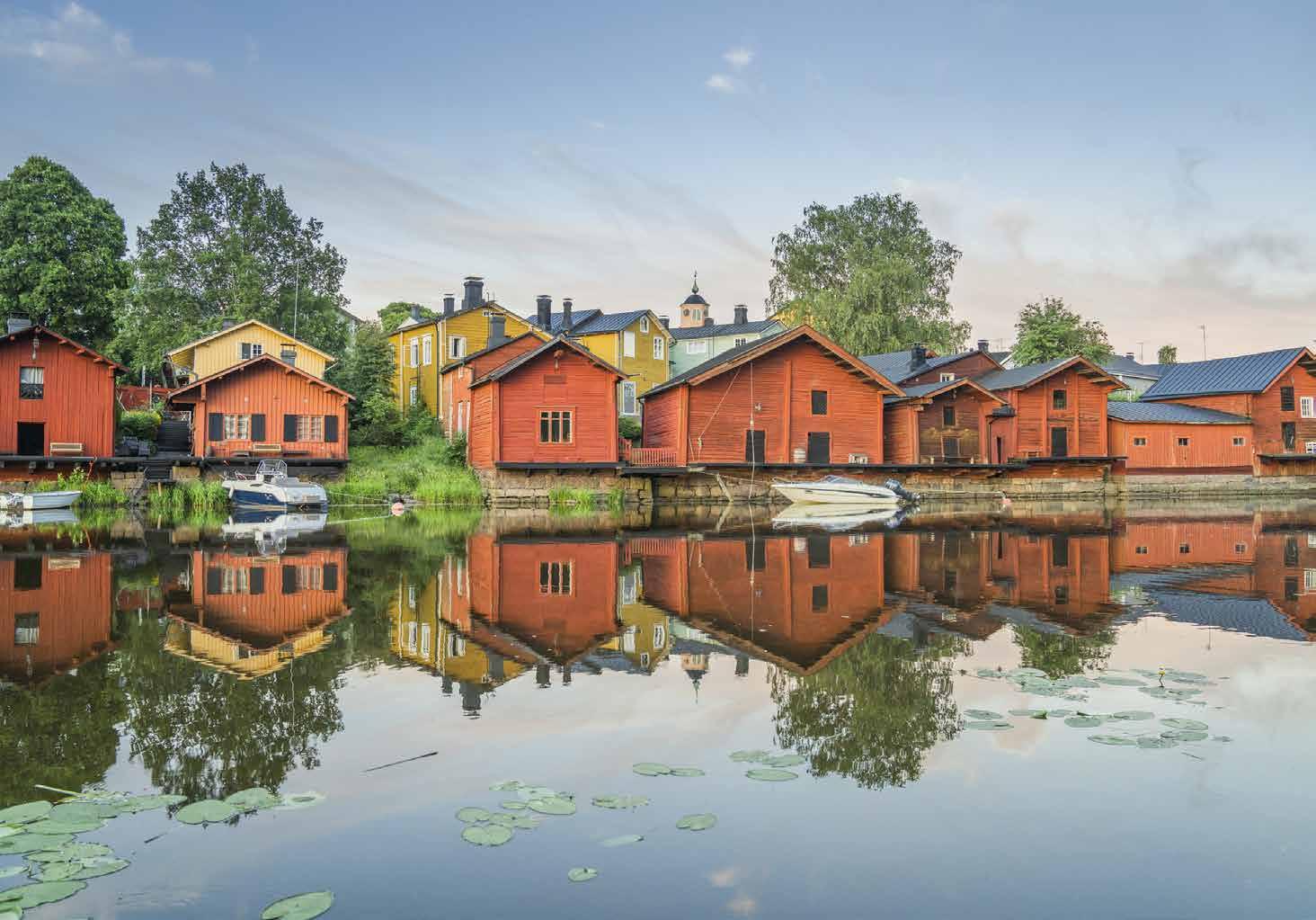
Explore the captivating charm of Porvoo, Finland’s second oldest town, known for its enchanting Old Town, riverside cafés, and boutique shopping.
Just a short bus ride from Helsinki, with frequent departures from Kamppi bus terminal, Porvoo invites you to discover its rich history, unique attractions, and vibrant cultural scene.
Learn more about the opportunities our city has to offer at Visitporvoo.fi.





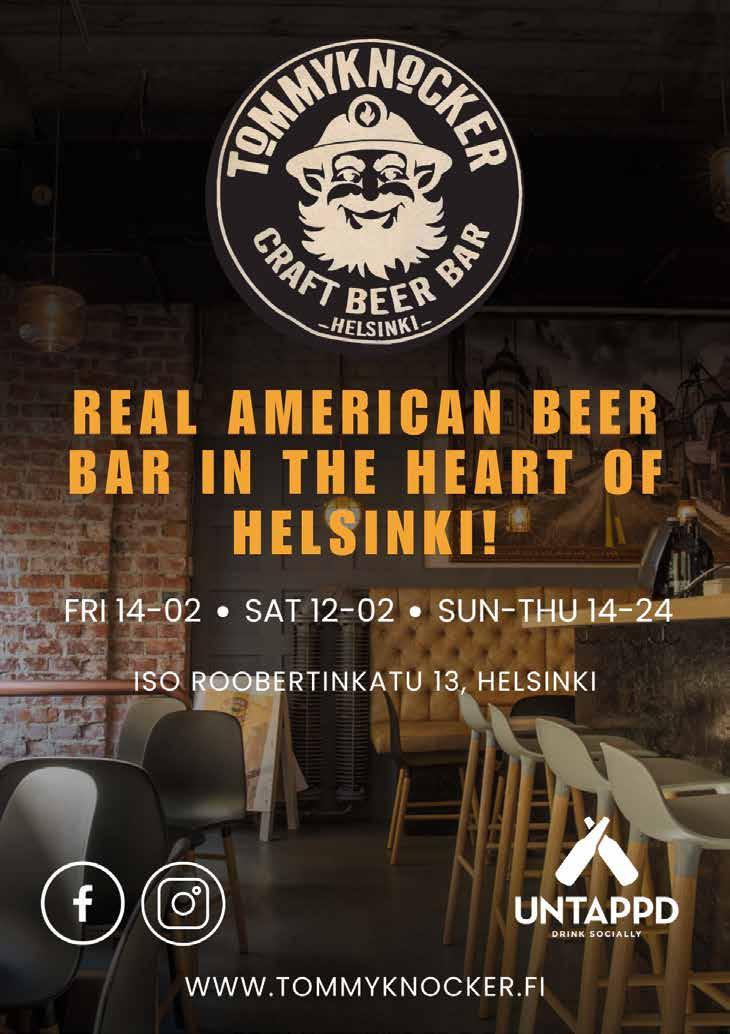
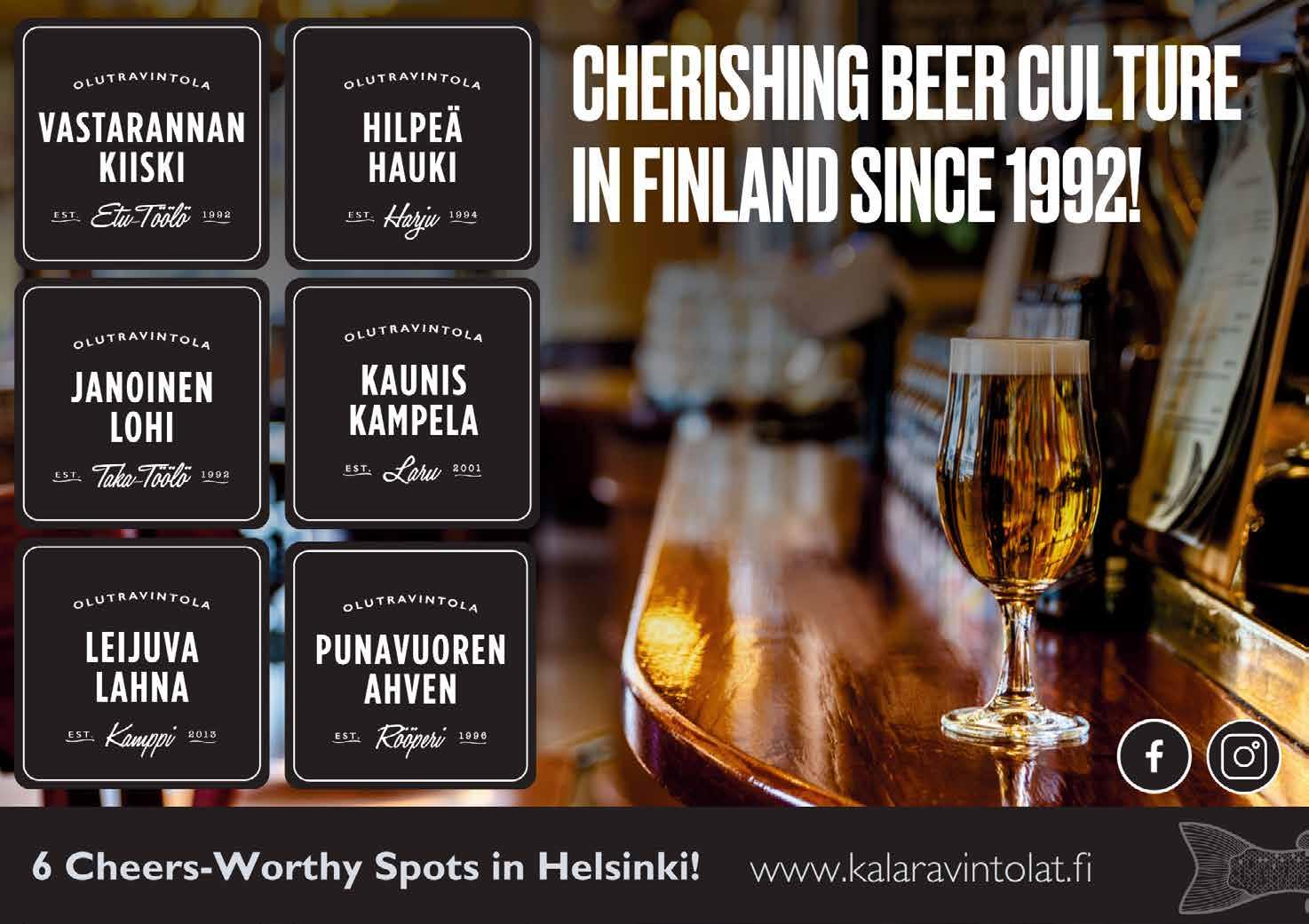






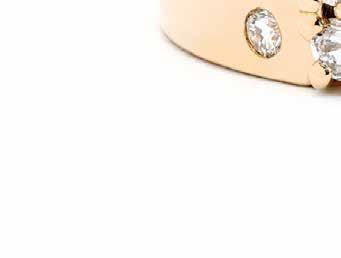





















Design by Jussi Louesalmi
Check out the high-quality diamond jewelry collecti on designed and crafted in Helsinki: au3goldsmiths.com



































































